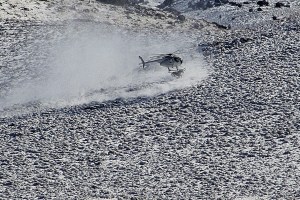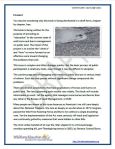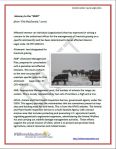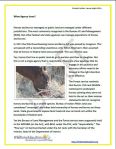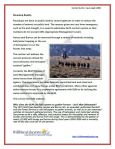This page offers the book “Wild Horse Education” as it is written in draft form, chapter by chapter. All content and photos are still covered under copyright law. Printing for distribution by written permission only, intended for free personal use. Scroll to the bottom of the page to download section by section.
Forward
You may be wondering why this book is being distributed in a draft form, chapter by chapter, free.
This book is being written for the purpose of providing an “education” to the current state of wild horse and burro management on public land. The intent of the project is to outline the “what is” and “how” to move forward as an effective voice toward changing the problems that exist.
This issue is complex and often changes quickly. The basic process for the public to participate remains relatively unchanged, though it may be difficult to understand.
The current programs of managing wild horses on public land are in serious need of reform. Each day that passes without significant change compounds the problems.
There are several jurisdictions that have populations of horses and burros on public land. The laws governing each section vary widely. This book will include information on each. Yet the agency that manages more horses and burros than any other is the Bureau of Land Management, or BLM.
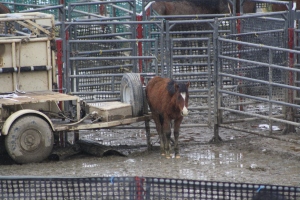
- Youngster leaning against “junk” in a temporary holding pen, Callaghan roundup Christmas week 2010 (Leigh)
Many people are drawn to this issue because as Americans we still care deeply about this National Treasure. We care as deeply as we did when in 1971, Congress passed the Wild Free Roaming Horse and Burro Act, without a single dissenting vote. Yet the implementation of the Act went seriously off-track and legislation was continually gutted by measures that were hidden in other bills.
The most under-handed of all was the rider slipped in to a thousand page omnibus spending bill, pre-Thanksgiving recess in 2003, by Senator Conrad Burns. This rider created the outrage known as “sale-authority” that allowed the Federal government to sell horses “without limitation,” meaning to slaughter.
The Head of the BLM, Bob Abbey, and the current Secretary of the Department of Interior, Ken Salazar, have both said that sending horses to slaughter or mass-euthanasia are not “on the table.” Yet the Burns Rider still exists and is often a focal point that draws attention away from real reform. The statement “we will not kill all the horses” is almost used as a “stop-gap” to conversations that attempt to address the issues. Almost as if the American public should be grateful, no matter how badly the program runs, as long as the horses are not outright shoveled into mass graves.
Recently the BLM has sent a Strategy document to the public. That document basically proposes a “business as usual” approach, with a minor caveat, until a two year study is completed by the National Academy of Sciences followed by an extensive Environmental Impact Statement that will take another three years to complete. The current protocol simply continues to remove what is left on the range, even though the words in the document claim a different outcome.
At the Augusta HMA in January of 2011 the BLM proposed what was supposed to be a “trap, treat, release” roundup to illustrate the “new” protocol. That roundup occurred in an area that did not have an overpopulation of horses. Technically a roundup in violation of the Act if it were designed for removals. During the process of the roundup decisions were made that removed significant numbers of horses, almost one-third.
It is what happened. This clearly demonstrates that any proposed change in this program feels more like a placation strategy to an outraged public than one that reflects real change in protocol.
The truth is that maintaining any viability of a wild population is already threatened. After the passage of the Act, 318 Herd Areas were identified in ten Western States. Of those areas we now have less than 180 Herd Management Areas. Within those areas less than 30% of them reflect populations that in any way, shape or form represent a viable breeding population. One of these areas that claim to still manage horses has an Appropriate Management level set at three horses! Three is not a number viable for any population, yet statistically that area is still included as managing a population.
What we have seen since the passage of the Act has been a continuation of the very same mindset that the Act was intended to stop. “Mustanging” was a brutal practice of feral livestock management by members of the public. It can be argued that the same mindset was simply transferred into Federal hands and the profiteers are now selected by the Federal government.
Nowhere in this program does the data exist that reflects any change that manages a wild population as intended by the 1971 Legislation. Sex ratios are being skewed when the average natural sex ratio on a range over time is not known. The seasonal migration patterns have not been studied, nor recognized in the original boundary lines. Removals occur without recognition of basic band structure. Basic humane issues are numerous throughout the program. The list goes on and on.
Time is of the essence here.
Normally with a book you find the “Glossary” at the end. With this book it appears at the beginning. One of the most frustrating experiences is trying to understand what should be a simple conversation. The terms and abbreviations used can turn many way in exasperation.
This book will be released in a “draft” form, chapter by chapter. Because the time it takes to “make it perfect” does not exist. The time and energy needed to find distribution need to go elsewhere.
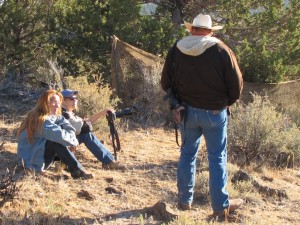
Laura Leigh with photographer Terry Fitch, both representing Horseback Magazine at the Twin Peaks Roundup of 2010 (photo by RT Fitch)
Note about the Author:
Laura Leigh is a journalist/photojournalist that has been to more roundups in the last year than any government personnel or public observer. Leigh has been to HMA’s and HA’s in six different states documenting horses in the wild, in holding facilities and during roundups. Leigh has worked with the Equine Welfare Alliance for almost two years as a Subject Matter Expert in the research department. She has worked with numerous Equine Welfare organizations over the last year. A Federal, First Amendment lawsuit has been brought by Leigh to protect the public’s “right to know” about the hands-on care of wild horses from range into holding facilities that are closed to the press and public.
To support this work, contributions to Wild Horse Education are needed. Wild Horse Education is a registered non-profit in the State of Nevada. We are in the process of filing for Federal status.
Wild Horse Education (free book)
Click the images below for printable versions of each section
Coming Soon: What FOIA?

